The last time that PC players saw anything from Tiny Bull Studios was in 2018, when the developer released two titles a few months apart. Omen Exito played like a "choose your own adventure" title, with you looking at a book and accompanying character sketches. Blind played with the idea of echolocation for navigation and mystery-solving from a first-person standpoint. Both games had their followings, and both games focused more on narrative than action. The Lonesome Guild, the studio's latest release, is different in a number of ways. The game is more action-oriented and has some RPG-like mechanics, but it still has the bones of a good story, demonstrating that the studio has some breadth beyond narrative adventure titles.
The world of Etere was a peaceful place, but something is stirring that threatens everyone in the world. A crimson red fog has started to envelop the land, caused by an extreme feeling of loneliness that is making former heroes act against their normal beliefs. Amidst all of this, a comet streaked through the skies and fell near some ruins. An inventor named Davinci happened to be tracking the comet and discovered that a spirit was left behind in the comet's landing spot. After escaping the fog and picking up a companion along the way, Davinci and the spirit (now named Ghost) have been tasked with traveling the world to recruit potential new heroes to stop the spread of loneliness before the world is engulfed.
For the most part, the story is quite good. The narrative is easy to grasp, and it progresses nicely due to the pace at which significant story beats appear. The characters give the story some heart, and this applies to the heroes you control and heroes you meet along the way — in addition to the enemies you're fighting. There are solid motivations for everyone and details that drive their distinct personalities. Conversations that might initially seem like filler turn into moments that provide nuance to the tale.
The game describes itself as an action-RPG, and it mostly follows the genre blueprint. Every battle nets XP, and the XP is distributed to everyone in the party regardless of whether they saw any action; it's a great way to ensure that no one is left grossly under-leveled. Leveling up also nets skill points to either buff stats or get a character to learn a new skill. You can equip anyone with up to four items at a time, but the same item can't be shared among party members.
The one element that's different is the presence of Relationship Points. Passing certain milestones in the game gives everyone in the party an equal amount of Relationship Points, but the conversations by the campfires that save your progress are where the bulk of your points will come from. Not all conversations strengthen the relationship, but anytime some dialogue asks Ghost to side with anyone, it represents an opportunity to give all of the points to one person. Relationship Points are responsible for unlocking the next section of a player's skill tree; it's another reason the dialogue sequences are so important. The only issue is that your choices may give points to only one character, so you might have to go against your own judgment if you want to balance out the Relationship Point distribution.
In terms of combat, The Lonesome Guild is easy to understand but still a tad different from its contemporaries. You can see your enemies, but there's no such thing as combat advantage. You can't use your weapon when you're not in a fight, and enemies stay still so combat only occurs when you break an invisible line. Fighting doesn't happen throughout a level, as each combat scenario is restricted to specific zones. The game can have the exploration and puzzle areas separate from combat, so one element doesn't interfere with the other. Also, the transition in and out of combat is seamless, so you get fanfare when jumping in and out of a fight, but you don't get any summaries of how much XP you've earned.
The fighting takes on the properties of a hack-and-slash title, so you aren't going to jump into menus to move or use an attack. This also means that you can't use items while in a fight. You only have one attack type that can be strung into basic mini-combos, but you can call upon some more powerful attacks when you build up your meter. There's also a meter for Ghost, and while filling it up means that you can perform an attack that usually clears the screen of most enemies, you can also use his energy to perform special moves, like healing or a temporary stat buff, depending on which character you're controlling.
One interesting element of the combat system is that Ghost needs to possess a character for you to control them. That seems arbitrary until you get a call from another character to have Ghost possess them instead. Doing so gives them a small time period during which all attacks are amplified. This creates an interesting combat flow where you'll happily punch away at a foe, get the call to switch, and determine the best time for the switch so you can make the most of the limited time. It adds an interesting wrinkle to a combat system that could have easily devolved into smashing away at the attack button while dodging occasionally.
With the game giving you at least two characters to control in a fight very early on, it initially seems like a missed opportunity to not have multiplayer. This is especially true when you reach the max of three characters per party. However, the decision to design the game as a solo experience proves to be a good one, as it allows for the effective use of the Ghost possession switching system. Another thing you'll notice is that the game is good about ensuring that your other companions are smart about what they do. None of them will ever use their special abilities, but they can hold their own in a fight — sometimes enough to kill some weaker enemies. The game also ensures that your companions are invincible when you don't control them, so you'll never be in the situation of needing to revive companions at the worst possible time.
While the hack-and-slash system makes combat accessible, there is the issue of enemy attack readability. Your attacks can't knock an enemy out of their own attack animation, so constantly attacking them without paying attention almost guarantees that you'll get hit with an enemy attack. The problem lies in the colors; your own attacks produce a red color, but the same color appears when an enemy is charging their own attack and unleashes it. In the heat of battle, considering that you'll almost always be fighting multiple enemies at a time, it's easy to lose track of whether an enemy is about to attack. You'll need to pay attention to the animations and ignore the colors to determine when you'll need to dodge. This doesn't break the combat system, and unless you put the game on the highest level of difficulty, you won't die often, but it is irksome to see that a system designed to help ends up hurting you instead.
The campaign can take around 20 hours to finish, which is actually quite good. The Lonesome Guild does a good job with pacing, so it doesn't feel like 20 hours or more before you reach the end credits. The balance for both the puzzle and combat elements ensures that you aren't stuck on something for longer than expected. The game has quite a number of side-quests for those who want to extend the adventure, so you'll get your money's worth even if you aren't a completionist.
The presentation is very solid all around. Graphically, the game looks quite nice. The art style for the characters provides the game some softness, which works as a great counter against the sometimes-harsh story. The adorable look of the heroes also works well with the environments, which look very good from any of the angles of the isometric viewpoint. All of this happens with no big graphical glitches. With the game lacking any voices whatsoever, it falls on the rest of the audio elements to make up for it. The music does a great job of conveying the appropriate mood for each environment or situation, and the tracks are varied enough that you won't get bored of the soundtrack. The sound effects also carry some punch, so it's always clear when you land an attack or if you did something correctly in a puzzle.
The game feels right at home on the Steam Deck, but some more optimization tweaks would be welcome. The game runs at the device's 1280x800 native resolution and does so without any small text. The frame rate fluctuates wildly depending on what's happening on-screen, but you'll hover around 40fps most of the time. With a full charge, the battery life hits around three hours on the LCD version of the Deck, but placing a frame rate cap of 30fps can buy you a little more time before you need to plug the device into the wall. Linux desktop users will be glad to hear that no tweaking is needed to run the game smoothly, no matter the hardware.
As stated in the beginning, The Lonesome Guild is a solid adventure game all around. The RPG elements are deep enough to give the action some teeth, while the action is easy to pick up but is involved enough that the game isn't a button-masher. The adventure is entertaining, while the story gives the game some unexpected heart. The Lonesome Guild will make adventure fans happy.
Score: 8.0/10
More articles about The Lonesome Guild


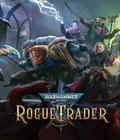
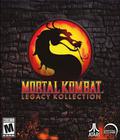


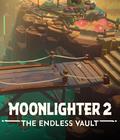
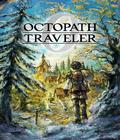
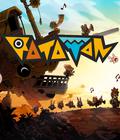
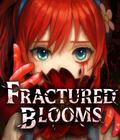

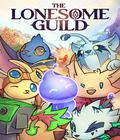 The Lonesome Guild is a top-down, single-player action-RPG all about friendship and connection.
The Lonesome Guild is a top-down, single-player action-RPG all about friendship and connection.














